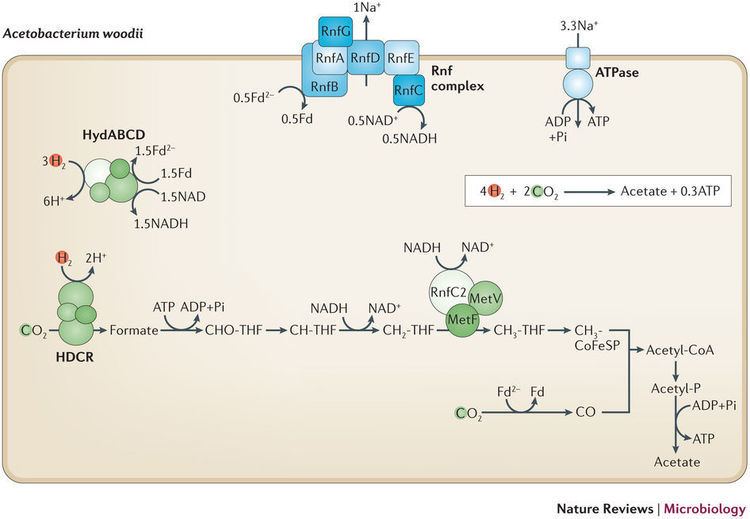 | ||
Acetogenesis is a process through which acetate is produced from CO2 and an electron source (e.g., H2, CO, formate, etc.) by anaerobic bacteria via the reductive acetyl-CoA or Wood-Ljungdahl pathway. The different bacterial species that are capable of acetogenesis are collectively termed acetogens.
Contents
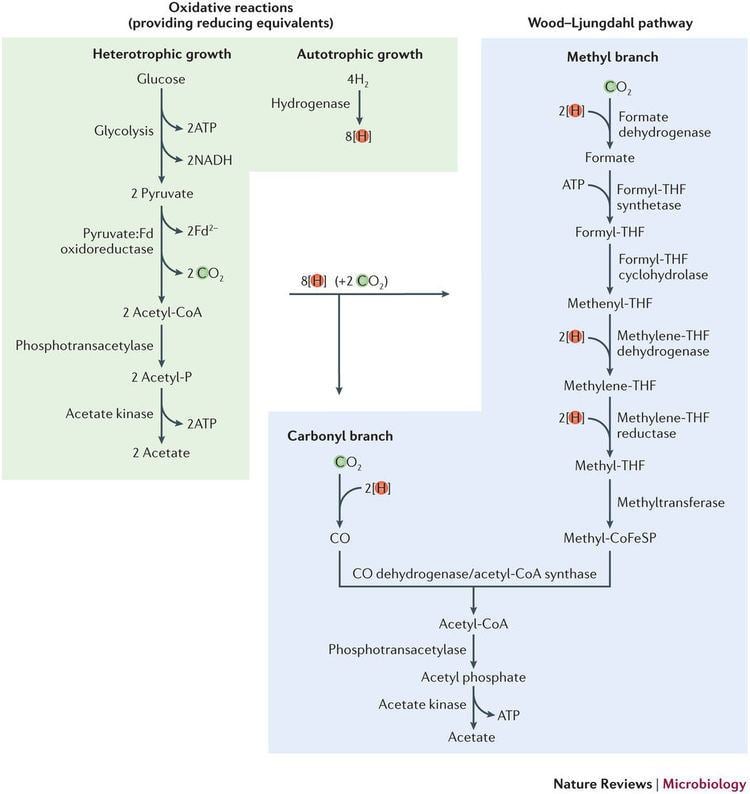
How to pronounce acetogenesis
Biochemistry
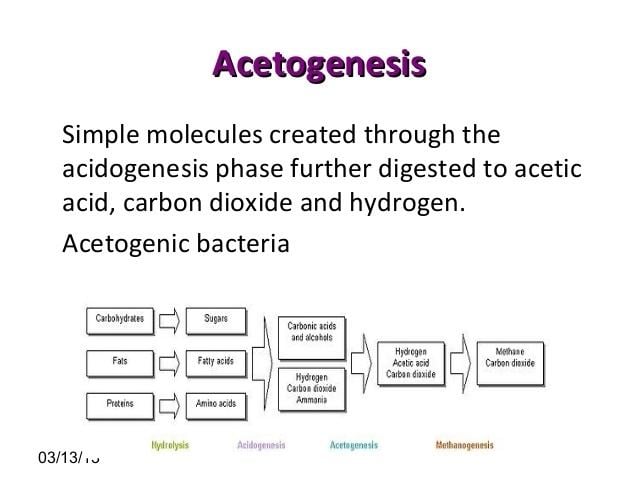
The precursor to acetic acid is the thioester acetyl CoA. The key aspects of the acetogenic pathway are several reactions that include the reduction of carbon dioxide to carbon monoxide and the attachment of the carbon monoxide to a methyl group. The first process is catalyzed by enzymes called carbon monoxide dehydrogenase. The coupling of the methyl group (provided by methylcobalamin) and the CO is catalyzed by acetyl CoA synthetase.
2 CO2 + 4 H2 → CH3COOH + 2H2O

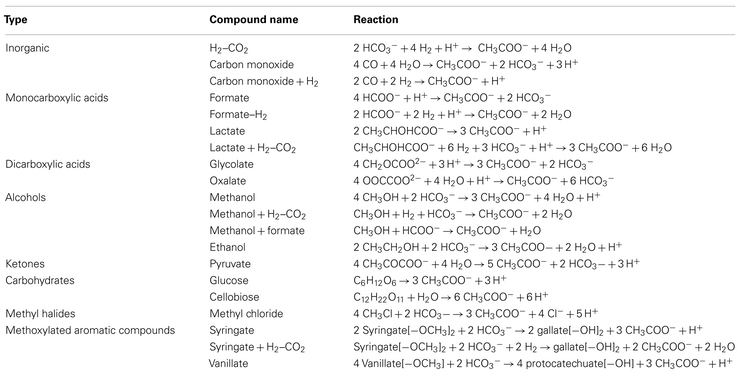
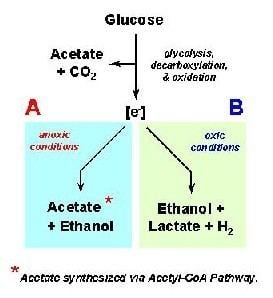
References
Acetogenesis Wikipedia(Text) CC BY-SA
